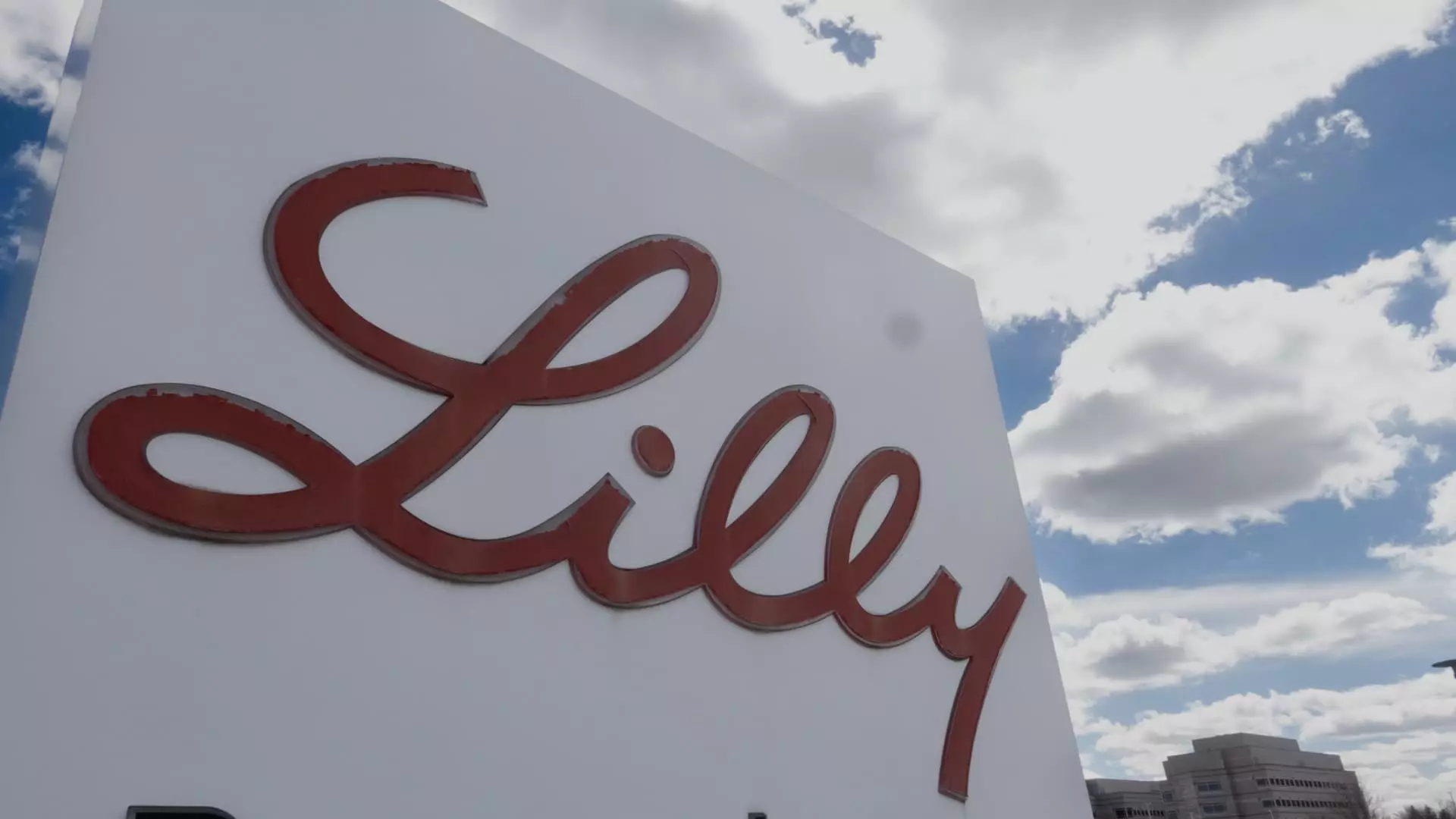Eli Lilly, a prominent player in the pharmaceutical sector, has made headlines with its ambitious plan to invest $4.5 billion into the construction of the Lilly Medicine Foundry. This facility is designed to advance drug manufacturing techniques, significantly contributing to the efficiency and effectiveness of how pharmaceuticals are produced. By streamlining the transition from lab-based discoveries to actual drug manufacturing for clinical trials, Lilly aims to set a new industry standard. This innovative approach is not merely a reaction to market trends but a preemptive strategy to secure its position in the rapidly evolving landscape of the biopharmaceutical industry.
The ramifications of having a center that combines research and production capabilities in one location are profound. According to Eli Lilly’s CEO David Ricks, this integrated strategy is critical for successfully advancing new drugs from theoretical concepts into tangible medications that reach patients. The Lilly Medicine Foundry is intended to facilitate a seamless flow of knowledge between drug development and production. By co-locating these two functions, Lilly hopes to leverage efficiencies that can accelerate the introduction of new therapies, ultimately benefiting patients and driving brand loyalty.
This facility is particularly vital in light of Lilly’s recent successes with its weight-loss drugs, Mounjaro and Zepbound. These drugs, part of the increasingly popular category of GLP-1 receptor agonists, are projected to generate an astonishing $50 billion in revenue by 2028. The exponential growth potential tethered to these products allows Lilly not just to invest in the foundry but also to allocate resources to diversify its research pipeline.
Despite the promising outlook for Mounjaro and Zepbound, Eli Lilly understands that reliance on these blockbuster drugs could pose risks. The company is actively exploring avenues for innovation that transcend its immediate successes in obesity medications. With aspirations to develop treatments for Alzheimer’s disease and other neurodegenerative disorders, Lilly’s Chief Scientific Officer, Dr. Dan Skovronsky, emphasizes that the pharmaceutical landscape is ripe with unexplored opportunities. This forward-thinking ethos allows Lilly to remain agile in an industry characterized by constant change.
Ricks highlights a pressing need for innovation in areas such as addiction and mental health treatment. Given Lilly’s historical roots in psychiatric medications — from Prozac to its recent Alzheimer’s drug Kisunla — the company is well-positioned to tackle these significant health challenges. The acknowledgment of unmet needs in neuropsychopharmacology not only aligns with social imperatives but also presents a lucrative market for future discoveries.
Eli Lilly is not merely content with its current offerings in obesity treatments. With an ambitious pipeline that includes 11 potential obesity medications, Lilly is keen on expanding its methodologies. The company is exploring various routes of administration, including both pills and injectables, to cater to diverse patient needs. Ricks has candidly admitted that innovation must persist in this field, as a single drug cannot fulfill the spectrum of requirements for managing obesity effectively.
Two drugs currently in the pivotal Phase 3 trials highlight this commitment: orforglipron, an experimental oral formulation, and retatrutide, an injectable alternative. Lilly aims to invest in research that taps into multiple mechanisms of action for these medications, responding to the growing demand for more comprehensive obesity solutions.
Eli Lilly’s trajectory appears promising, with the company’s stock witnessing a remarkable surge of nearly 65% over the past year, culminating in a market capitalization approaching $840 billion. While the potential to reach a trillion-dollar valuation sparks conversations, Ricks maintains that this milestone is not a target but an indicator of successful value creation. The focus remains on enhancing human health through groundbreaking pharmaceuticals, an aim that resonates deeply with patient outcomes.
Eli Lilly’s strategic investments in the Lilly Medicine Foundry, alongside its expansive drug development efforts, signal a clear commitment to innovation and efficiency in the pharmaceutical landscape. By balancing the dual roles of research and production, while simultaneously venturing into new therapeutic areas, Eli Lilly not only fortifies its market position but also sets the stage for significant advancements in healthcare. The company’s ongoing dedication to tackling the pressing health challenges of society reinforces its standing as a leader in the biopharmaceutical field.

